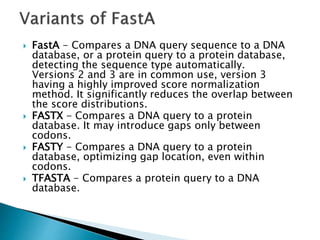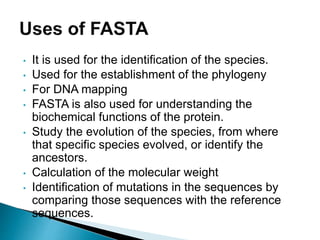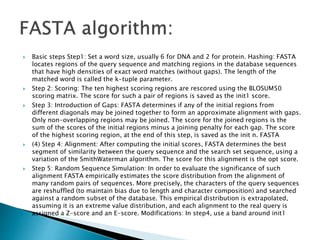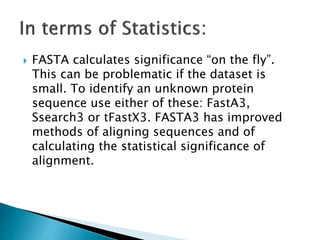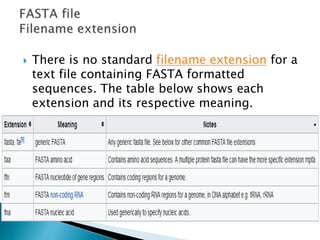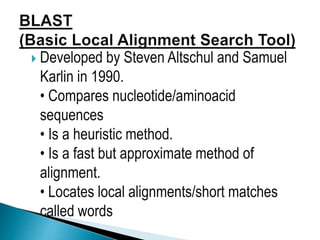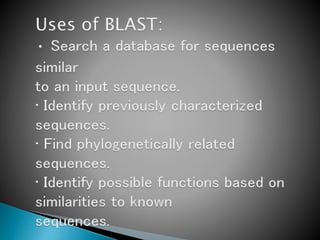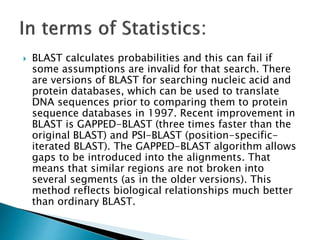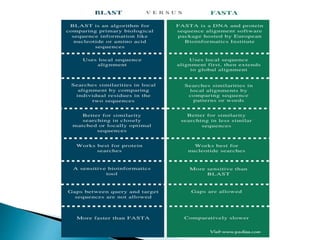FASTA is a sequence alignment tool that was developed before BLAST. It uses a hashing strategy to find matches between k-tuples, or short stretches of identical residues, in query and target sequences. FASTA breaks sequences down into k-tuples and searches target databases to find similarities. While faster than dynamic programming, FASTA and BLAST may not find optimal alignments or true homologs.


